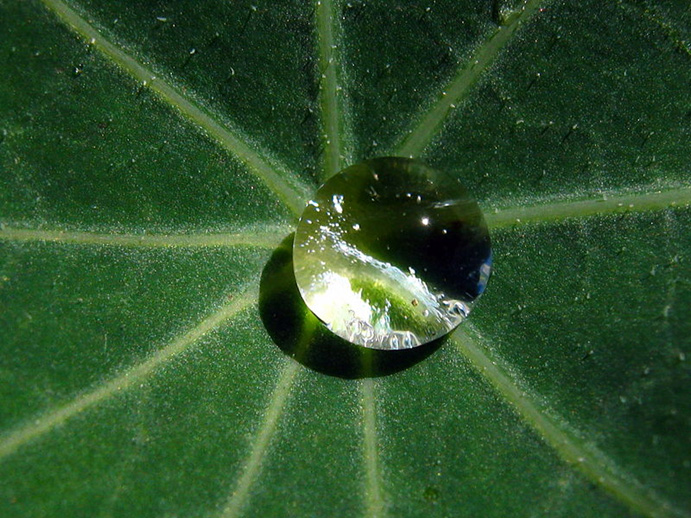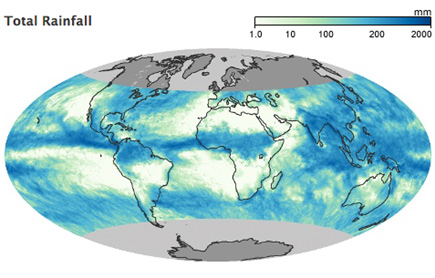
The water cycle makes life on Earth possible. And what makes it possible are the incredible properties of water itself.
Earth is the only planet we know of where the three phases of water—solid, liquid, and gas—are present on its surface.
That’s partly because those three phases exist in a narrow temperature window. And the middle phase—liquid water—corresponds to much of Earth’s surface temperature.
This allows our oceans to exist, which are the key reservoirs of the hydrological system. Winds moving across oceans lift huge volumes of water vapor—seven times more than simple evaporation could.
Converting liquid water to gas distills it, leaving salts and impurities in the sea and carrying pure water vapor into the atmosphere. It rises to form clouds and rains down elsewhere.
Three-quarters of that rain falls back into the ocean. The other 25 percent falls on land, where it’s used by all terrestrial life.
But it’s also one of the most powerful forces eroding the surface of Earth.
Gravity pulls rainwater downhill, and over a few million years—a blink of an eye on Earth’s time scale—it can flatten mountains and carry them in rivers, grain by grain, to the sea.
If frozen into glaciers, water becomes a river of ice and rock, grinding down the earth even faster.
The amazing life-giving, planet-shaping properties of water are what make Earth what it is, and we’ll talk a lot more about it on EarthDate.
Background
Synopsis: Earth’s water cycle is a story of continuous change, ultimately driven by the energy of the sun and gravity. The constantly changing phases of water—from solid to liquid to vapor—and the variety of physical, chemical, and biological processes can operate instantaneously or over thousands to millions of years.
- Water cycle describes the never-ending movement of water on the surface of Earth, above Earth in the atmosphere, and below it in groundwater aquifers.
- Most life and ecosystems on Earth depend on the water cycle.
- Earth is the only known planet with three phases of water on its surface.
- That Earth has such a large proportion of liquid water is amazing, given that water is only liquid within a narrow temperature range (0–100° Celsius or 32–212° Fahrenheit).
- Gravity and atmospheric circulation driven by the sun cause the processes of evaporation, condensation, precipitation, infiltration, surface runoff, and subsurface flow that move water from one reservoir to another. How does the cycle work?
- Wind blows constantly over oceans, forcing seven times as much water vapor into the air from ocean-water evaporation than from land-water evaporation.
- This evaporative phase of the cycle distills the water and leaves behind impurities, producing pure water vapor. Plants also produce pure water vapor into the atmosphere through transpiration.
- Winds spread water vapor around the globe; there is so much water vapor in the atmosphere that it is the primary greenhouse gas on Earth.
- That ice-cold glass of water on a hot day causes water vapor in the air to condense on the glass because the surface is colder than the dew point temperature of the air. The same process is responsible for morning dew on leaves.
- Water vapor rises, cools, and condenses into clouds of tiny droplets that grow until they are too heavy to be supported by updrafts; they then fall as rain or snow. If water vapor runs into cooler air close to the ground, it forms fog.
- More than 75 percent of Earth’s rain falls over the ocean.
- For precipitation over land, the type and rate of precipitation, steepness of the topography, geology, and type of soil determine whether the precipitation forms snowpack; infiltrates the soil; percolates into groundwater aquifers; or joins streams, rivers, and lakes as surface-water runoff.
- In river valleys, there is continuous exchange between rivers and groundwater; when groundwater reaches the surface, it creates a spring.
- Surface-water runoff erodes the landscape, dissolving and transporting minerals on its way back to the ocean, where it delivers nutrients beneficial to sea life.

Total rainfall on Earth, July 2016; blue indicates more rain. Credit: NASA Earth Observatory

